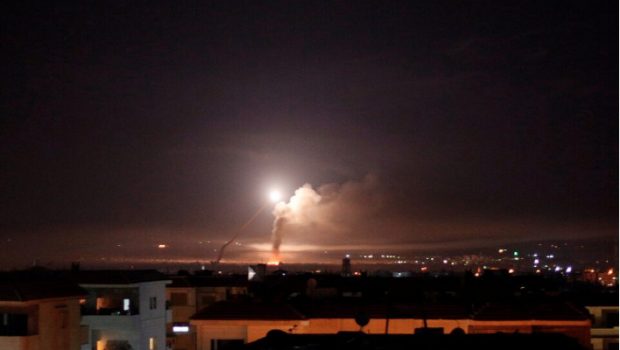

As in other countries, the AH-64 Apache attack helicopters have tremendous value and an important role in Israel’s arsenal in the modified AH-64A Peten and AH-64D Saraph versions. Continuing the “pattern” we have seen in other platforms such as the F-16I Sufa or F-15I Ra’am, through its Apaches Israel has purchased a promising platform, modified it based on its distinct operational needs and highly integrated defense systems. Its domestic defense industry.
About the AH-64 Apache as a basic design
Although it is a typical helicopter that quite a few people know about, it is useful to say some basic things about its design and development. The AH-64 Apache is a fighter jet designed by Boeing. It has become an iconic symbol of the attack helicopter class. The Apache is equipped to handle a variety of combat scenarios. Its advanced electronics suite enables precise targeting, while its powerful weapons, including Hellfire, Spike missiles, rockets and a 30mm chain gun, ensure it can effectively deal with ground and air threats.
In addition to his combat capabilities. The Apache’s design emphasizes crew safety and survivability, with features such as crash-resistant seats and shields around operators. As the primary attack helicopter for many armed forces around the world, the AH-64 has seen action in various conflicts, cementing its reputation as one of the most powerful and versatile air weapons systems of the modern era.
It has two rotors, a main rotor behind and above the operators’ seats and one in the tail. Both rotors have four-blade propellers. It uses two General Electric GE T700-701 engines, except for the British WAH-64D, which uses Rolls-Royce RTM 322s.
Israel’s acquisition of an AH-64 Apache aircraft
Israel and the Apaches have a long history with Israel showing interest in the AH-64 as early as 1983, the same year the first AH-64As rolled off the production line. Therefore, in the same year when a prototype Apache aircraft was found in Israel to be tested in the desert climate, it was evaluated and tested by the Israelis. The result was positive, as the Israeli Armed Forces felt that this helicopter would improve their anti-tank capabilities, and so, after overcoming some disagreements within the army, an order was issued.
The first helicopters arrived on September 11, 1990, making Israel the first export user of the Apache. It is worth noting that the following month AH-64 aircraft received a “baptism of fire” in operations in Lebanon.
But in addition to the AH-64A, in Israel they received the name Peten, Israel has also been operating with the AH-64D Longbow since 2005. Thus Israel has 26 AH-64A and 22 AH-64D.
Upgraded AH-64A
Since the beginning of the last decade, the AH-64A has been upgraded with indigenous systems from companies such as Rafael and IAI. The decision was made after problems Israel faced in obtaining more AH-64D aircraft. Much of the AH-64A’s electronics were replaced, an external compartment was added for additional wiring, and Israeli electronics and weapons were installed.
More specificallyThe changes made relate to the helicopter computers and changing outdated wiring. New communications systems, new electronic warfare systems, a new sensor suite (M-TADS/PNVS) and a new self-defense suite were installed. At the same time, new weapons such as the Spike LR anti-tank missiles, the famous Spike NLOS missiles as well as the 70 mm GATR-L guided missiles were adopted.
It is now often said that the level to which Israeli AH-64As have been upgraded is very close to the capability level of the newer AH-64D Longbow.
Greek interest in modernizing the AH-64A
Here it is definitely useful to put “brackets” regarding the Apache “Alpha” upgrade.. For many years, the older but more numerous AH-64As were left almost entirely to their own devices while the newer AH-64Ds suffered losses. This situation is now changing with GDAEE signing an agreement, among other things, to upgrade Greek AH-64As and supply Spike NLOS missiles for 9 out of 19 helicopters of this type, and unfortunately not for all.
Thus, we follow Israeli promotion standards The Greek helicopters will also receive new sensors, new wiring as well as a new electronic warfare system. This upgrade will help the Air Force in several ways as the new systems will be easier to maintain, but operationally the AH-64As will have much greater value as their combat capabilities will be improved during the day and especially at night, and they will “bring to the table” a major weapon system such as the Spike NLOS. .
The value of Biyton and Saraf for Israel
The AH-64 Apache, in both AH-64A Peten and AH-64D Saraph variants, was and remains a key system in the Israeli Air Force (IAF) arsenal. As we said before, Israel acquired the AH-64A in the early 1990s and it quickly became effective in various operations, especially in anti-tank missions and precision strikes against enemy targets. The appearance of the Apache in Israeli service was marked by its participation in combat operations in Lebanon, where it was used against suspected terrorist sites.
Over the years, the AH-64A participated in numerous operations, including “Accountability” in 1993 and “Grapes of Wrath” in 1996. By 2005, Israel began receiving the AH-64D Apache Longbow, an advanced version with improved sensors and capabilities. This variant enhanced the Apache’s role in the Indian Air Force, providing improved night combat capabilities and the ability to engage multiple targets simultaneously. The AH-64D has played a vital role in numerous operations, providing the IAF with a platform capable of delivering precision strikes, gathering intelligence and surveillance.
BrieflyAH-64 Apaches, in both A and D types, were essential to Israel. Its combat record confirms its importance in conducting operations, providing the IAF with a powerful and versatile tool in modern warfare.
For more articles by Vassilis K.
Unauthorized copying of NEMESIS HD is prohibited.

“Avid problem solver. Extreme social media junkie. Beer buff. Coffee guru. Internet geek. Travel ninja.”





More Stories
Bad manta for Windows 11?
NASA: Received a laser message from deep space for the first time
PS Plus: 'Fire' in May – see free PS4 and PS5 games